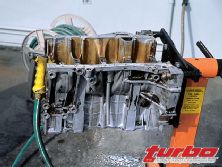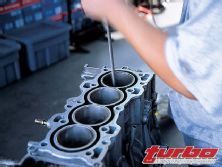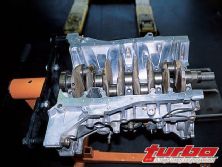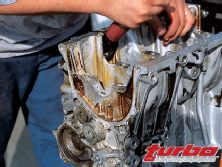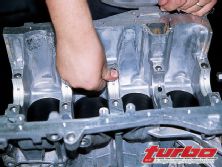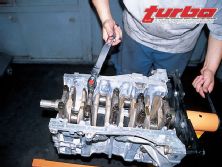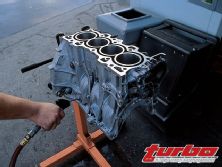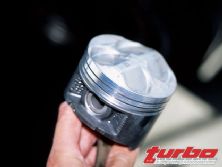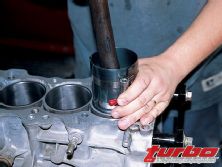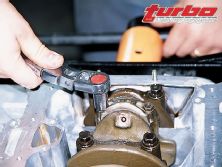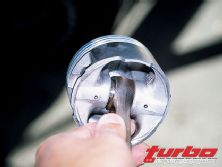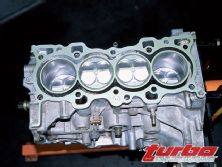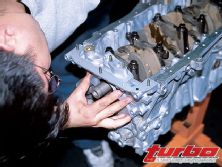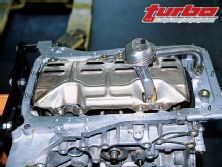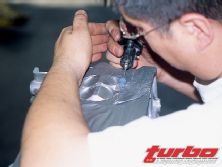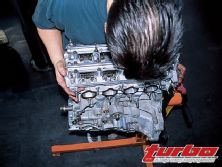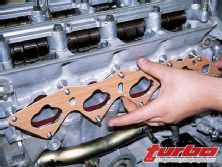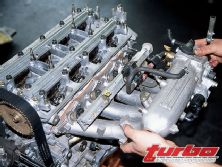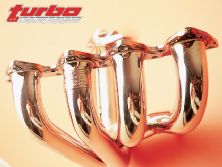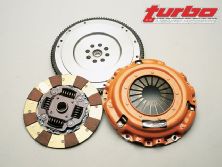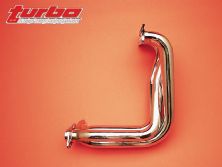The crew at Turbo is always trying to push the performance envelope. Power is everything-and there's no such thing as a perfect vehicle. While others might view a brand-new car as a work of art, we, on the other hand, are usually already trying to conjure up ways to make the car look and perform better.
Unfortunately, with today's stricter smog laws, performing the latter is a much tougher task. For performance enthusiasts who live in sunny California, receiving a smog notice in the mail is like a death sentence. With that death sentence there are very few options enthusiasts can choose from.
One, turn the vehicle back to stock and take it to the smog station. This can be rather expensive if you don't work on your vehicle and smog checks in California come every two years.
Two, you can purchase a pre-1973 vehicle, which is smog exempt. Of course, unless you like older cars, this isn't really an option. Or three, comply with the state's smog laws and drive with confidence.
Unfortunately, complying with the state's smog laws usually limits the amount of performance goodies you can install on your vehicle. There are only so many products that carry a CARB E.O. number. Fortunately for us, there is always that gray area where CARB E.O. numbers don't really make a difference. Our project goal is to build a DOHC LS/VTEC engine capable of producing 200 whp and still pass the sniffer at the smog station.
We started with a burnt-out core LS block we got from a local dismantling yard for $200. When purchasing a core block from a dismantling yard, check that the block is rebuildable. Remove the main bearings and rod bearings and inspect the crankshaft for any deep scratches. If there is a spun rod or main bearing, look for another block.
We sent the block to JG Engine Dynamics to have it slightly bored out for the oversized Civic Type-R pistons. While the block was being worked on, we modified the small end of the LS rods to accommodate the Type-R piston pins. (Photo 9) Follow along as we assemble the engine.
The engine was installed into a 1995 GS-R donor vehicle. At the current stage, we're breaking in the engine and have already clocked about 800 miles without a hiccup. With the stock air box, factory header and exhaust, the vehicle passed the sniffer with flying colors.
Next, we'll install a set of 4-into-1 DC headers, Skunk 2 exhaust, JG Edelbrock intake and throttle body, JG Engine Dynamics camshafts with Skunk2 adjustable cam sprockets, AEM fuel rail and regulator and a reprogrammed ECU.
Stay tuned as we search for 200 whp and find out if we pass the sniffer.
After the block was bored and resurfaced, the first thing on the agenda was to clean the block. We used a heavy-duty degreaser to remove the 10 years of sludge build-up. After thoroughly cleaning the block, we used compressed air to dry it.
By using a finishing brush and drill we were able to prep the walls of the cylinders to ensure proper piston ring sealing.
Albert Gamboa Jr. of Al's Chevron handled sizing up the bearing codes for the rod and main bearings and the assembly of the engine.
After installing the right colored main bearings in the journals, the crankshaft was put in place.
The five main caps have to tighten in a torque sequence using a high-quality torque wrench.
The JDM Civic Type-R pistons are a work of art. Check out the dry film-coated skirts. Each piston was inserted into a piston ring compressor and pushed into the proper cylinder. The rod caps also have to be torqued to the correct ft-lbs for safe operation. With all the pistons installed, it was time to button up the bottom end.
For added oil pressure and volume, an Integra Type R oil pump was used.
After installing the splash guard and oil pickup, we installed the factory oil pan.
As a preventative measure, the sharp edges of the Civic Type-R pistons were taken down with a Dremel using a grinding bit.
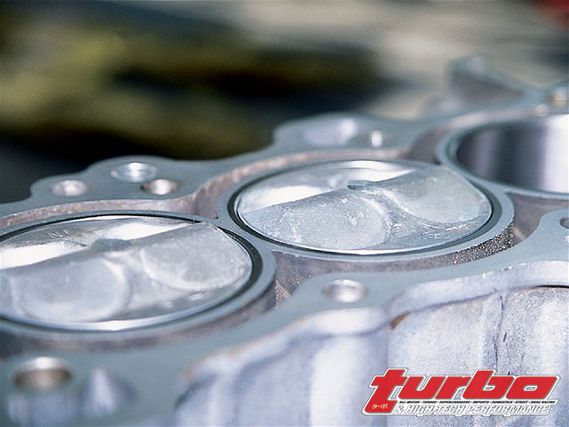 | Smog-Legal Power - 1995 Acura Integra GSR
| Smog-Legal Power - 1995 Acura Integra GSR Wanting to achieve maximum horsepower, the top-end was ported and polished by JG Engine Dynamics to the company's Pro Series specs.
To sustain high-rpm operation, stiffer valve springs and lightweight titanium retainers were utilized. With the GSR camshaft installed, we adjusted the rockers to the proper clearance.
The last component installed on the hybrid Honda powerplant was a Civic Si intake manifold.
DC 4-1 stainless-steel header
For faster revs, we installed a lightweight steel flywheel and dual-friction Centerforce clutch in the Integra.

